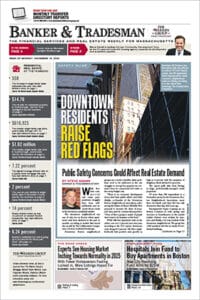The MBTA’s latest five-year investment plan, released last week, is a strikingly short-sighted document for a world facing a climate emergency. But with Beacon Hill behind the eight-ball on transit topics, can we really heap all the blame on T officials?
The T’s plan, known as the “CIP” for short, is chock full of great projects. First, the agency wants to plow hundreds of millions of more dollars into so-called “state of good repair” projects aimed at reversing decades of disinvestment in all kinds of behind-the-curtain features like signal systems. The agency also wants to start getting ready for a major transformation of the Green Line by building a test track and other infrastructure that will let it replace the entire trolley fleet with a new kind of train, to be called the “Type 10,” that can carry 225 people at once.
But conspicuous in its absence is any funding to electrify and speed up the commuter rail network. Despite $2.76 billion the CIP programs for 121 projects across the T’s commuter rail network, there appears to be zero dollars allocated to this vital task.
The T’s commuter rail currently uses 100-year-old diesel-electric engine technology. These trains are excellent for hauling heavy loads long distances but are ill-suited to the kind of start-stop travel common on suburban passenger service.
Anyone who has stood on a platform as an MBTA commuter rail train labors to pull away has seen this problem first-hand. Compare that performance to a Red or Orange Line train accelerating smartly out of a station, and you’ll see why the world’s most modern passenger rail systems instead rely on what’s called “electrical multiple-unit” trains that have motors powering each carriage.
This acceleration, in turn, makes overall journeys on one of these modern lines faster, making service both a practical alternative to driving and letting more trains run on a line per hour, offering riders practical options beyond the once-an-hour or every-30-minutes schedules currently used on the MBTA’s suburban network.
In a world where the pandemic forever shattered the 1950s vision of suburban white-collar men catching “the morning train” into downtown offices, we need the T’s trains to catch up with 2022 reality. The climate emergency demands we get drivers out of their cars. The changing nature of work means riders need frequent, fast service that can get them to and from home outside rush hour – and our business districts’ vitality will suffer if these workers see staying at home as the best option!
But this transformation will need a lot of money to effect – new overhead wires must be installed, new trains must be bought and so on – the kind of money an agency can’t propose spending without support from on high.
So instead of threatening to force the T to speed up bus electrification plans in a climate bill expected this spring, as Lexington state Sen. Michael Barrett did recently, Beacon Hill should focus on the bigger fish that can’t be fried without their leadership. A full diesel bus, after all, still carries its 30 to 50 passengers far more efficiently than 30 to 50 private cars.
Letters to the editor of 300 words or less may be submitted via email at editorial@thewarrengroup.com with the subject line “Letter to the Editor,” or mailed to the offices of The Warren Group. Submission is not a guarantee of publication.






